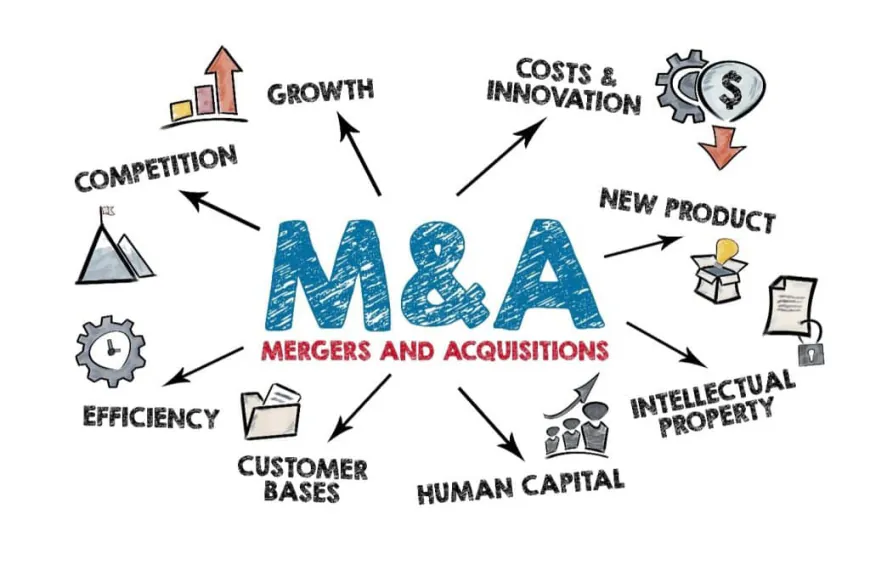The Role of Technology in M&A: Driving Efficiency and Innovation
In today's rapidly evolving business landscape, technology has become the backbone of modern enterprises, powering everything from day-to-day operations to customer engagement and product development. It is so crucial that more than a third of all mergers and acquisitions (M&A) are driven by the need to enhance the acquiring company’s technology stack.

In today's rapidly evolving business landscape, technology has become the backbone of modern enterprises, powering everything from day-to-day operations to customer engagement and product development. It is so crucial that more than a third of all mergers and acquisitions (M&A) are driven by the need to enhance the acquiring company’s technology stack. This strategic move helps companies remain competitive and innovate faster in an increasingly digital world.
IT Integration Beyond the Basics
During an M&A, IT integration is not just about ensuring that computer systems can communicate or that data is consolidated. It involves a comprehensive overhaul of the enterprise’s and cloud architecture to align with new business objectives. I have guided numerous organizations through this intricate process, ensuring that technology integrations are seamless and add significant value. In a recent project, we achieved a 20% increase in operational efficiency and a 15% reduction in IT costs within the first year post-integration by carefully managing each aspect of the process.
The most important lesson I’ve learned is that companies must meticulously align their technology strategies with their business goals during M&A. This ensures that clear governance is established and helps drive digital transformation initiatives across various business units. When done correctly, IT integration can define the future success of the combined entity by enabling the company to innovate, scale, and remain resilient in a competitive market.
The Strategic Importance of IT Integration
IT integration plays a critical role in enabling companies to leverage the strengths of both organizations. This may involve adopting more efficient workflows, gaining new insights from combined data analytics, or launching innovative products and services that were previously unattainable. Successful IT integration also requires investment in scalable cloud infrastructure, flexible development methodologies, and a strong focus on cybersecurity and data privacy. These elements are crucial for ensuring the long-term agility and success of the merged entity.
However, according to research by Bain & Company, 70% of systems integrations fail early in the process, often due to a lack of a robust M&A IT integration strategy. Without a well-defined roadmap, the unique technological advantages of the target company can be lost. This can lead to inefficiencies, increased costs, and missed opportunities for growth.
A Structured Approach to IT Integration
A structured approach to technology integration enables companies to combine the best technologies and practices from both organizations. This can significantly improve the company's market position, agility, and operational efficiency. To achieve these outcomes, the integration must address every aspect of the IT landscape, from data management to network infrastructure.
Common challenges in technology integration during M&A include misalignment of IT strategies, talent management issues, and cybersecurity concerns. Addressing these challenges early ensures a smoother transition and helps the merged entity realize the full potential of the acquisition.
Best Practices for M&A Technology Integration
For a successful IT integration, it is critical to involve senior leadership early in the process. The leadership team must provide clear direction and ensure that the integration aligns with the long-term vision of the company. Based on my experience, here are some key best practices for IT integration during M&A:
-
Build a Unified IT Strategy Early: Differing IT strategies can create friction during integration, impacting various business functions. For example, I once managed a merger where one company prioritized cloud solutions, while the other relied on on-premises platforms. Without a unified IT strategy, the new organization risked operational disruptions and increased costs.
-
Foster Collaboration Across Teams: IT teams from both companies must work closely together to develop a shared understanding of the combined entity’s goals. This collaboration ensures that critical systems remain secure and functional during the transition, while also unlocking new growth opportunities.
-
Leverage Cloud Solutions for Scalability: In a recent merger, we migrated key systems to the cloud, which allowed the combined entity to benefit from real-time data analytics and insights. This move significantly improved customer service and streamlined operations, resulting in cost savings and increased efficiency.
-
Prioritize Data Security and Privacy: As companies integrate their systems, it is essential to maintain the highest standards of data security and privacy. Any gaps in this area can result in significant financial and reputational damage.
By following these best practices and developing a robust IT integration strategy, companies can maximize the value of their M&A deals and position themselves for long-term success.

 Bajrang Sharma
Bajrang Sharma